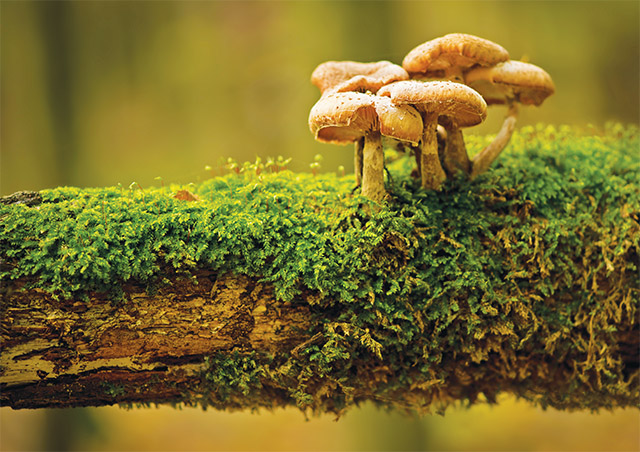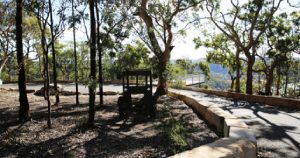
If you like weird stuff, I suggest you consider fungi:
• A fungus is alive, but it is not a plant or an animal. It is a member of the Fungus Kingdom, along with yeasts, moulds, mildews, rusts, smuts and other strange organisms.
• There may be over 1.5 million species of fungus worldwide, and over 10,000 in Australia. This is 6 times the number of flowering plants!
• Together, they make up 25% of the total biomass of the planet! Good grief! • 80% of plants need fungi for healthy growth. All orchids must have fungi to grow at all.
• Highly desired truffles are fungi.
When you dig in the garden, you often see fine white threads in the soil. These are mycorrhizal fungi that form symbiotic relationships with the roots of plants. They help provide nutrients, water absorption and disease resistance to the plant. In return, the fungus gets carbohydrates from the plant’s photosynthesis. In this area, Hawkesbury sandstone soils are low in nutrients, particularly phosphorus. Most native plants develop cunning ways of growing successfully. Plants in the Proteacae family (Banksias, Grevilleas, Hakeas etc.) rely on fungi to supply the phosphorus they need to grow. Native orchids depend entirely on fungi to germinate and grow. Perhaps at some future time, each plant sold will come with a small bag of soil containing the correct fungi.
Toadstools and mushrooms are the fruiting bodies of their much larger underground fungi, like a flower is to a plant. They give off spores that eventually form new fungi.
Decomposer fungi feed on dead plant matter, breaking it down into soil and recycling the nutrients. There are no waste products in nature – something our throw-away society needs to learn about and copy. The study of fungi is called mycology and those who do it are mycologists. There is a fascinating world of citizen science out there, waiting for your attention. One active group is the Australian Fungimap iNaturalist community. There are several other groups.
If you want to know more about fungi, don’t talk to the local Landcare group (www.StillCreekLandcare.com.au) because we won’t know much more than you. However, we do appreciate the complex fungi-related activity going on silently beneath our feet. It seems that whatever piece of the natural world we choose to notice, we find a new world of complexity and learning. And that makes us want to care for what is there. Ain’t life grand? – BY BARRY LEES






